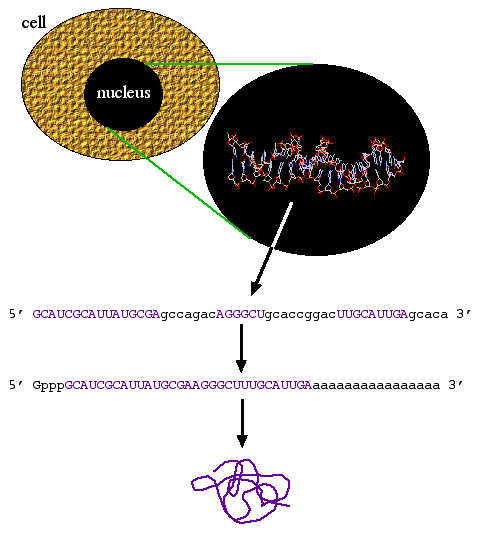Imagine a library, vast and filled with books. These books contain the complete instructions for building and maintaining a living organism. The library is your genome, and each book represents a gene. However, not all books are open to the public. Some are locked away, only revealing their contents when needed.

This is where cDNA cloning comes in. It’s like unlocking those closed books, revealing the hidden secrets of the genome – the specific instructions for building proteins. These proteins are the workhorses of cells, carrying out vital functions like digestion, immunity, and communication.
Table of Contents
So, what is cDNA?

cDNA, or complementary DNA, is a mirror image of a specific messenger RNA (mRNA) molecule. mRNA carries the genetic code for building a protein from the DNA in the nucleus to the ribosomes, the protein factories of the cell.
Why is cDNA cloning important?
cDNA cloning allows us to:
Isolate and study specific genes: We can create a library of cloned genes, each encoding a specific protein.
Express proteins in a laboratory setting: We can use cloned genes to produce large quantities of proteins for research or therapeutic purposes.
Study gene regulation: We can analyze the abundance of specific mRNAs in different tissues or under different conditions, providing insights into gene expression.
Develop diagnostic tools: We can use cDNA sequences to detect mutations or gene expression patterns associated with diseases.
The Steps Involved in cDNA Cloning
cDNA cloning involves a series of steps, each carefully orchestrated to create a complete and functional copy of a specific gene:
mRNA Isolation
This is the first step. We need to extract the mRNA from the cells or tissue of interest. We can use different methods, such as using magnetic beads coated with oligo(dT), which bind to the poly(A) tail present at the end of most mRNAs.
Reverse Transcription
This is where the magic happens! We use an enzyme called reverse transcriptase to convert the mRNA into a complementary DNA strand. This strand is called cDNA.
cDNA Synthesis
After reverse transcription, we use another enzyme called DNA polymerase to synthesize a second strand of DNA, creating a double-stranded cDNA molecule.
cDNA Library Creation
The cDNA molecules are then inserted into a cloning vector, such as a plasmid. This vector is essentially a small, circular DNA molecule capable of replicating itself inside a host cell, like bacteria. This process creates a cDNA library – a collection of cloned cDNAs, each containing a copy of a different gene.
Screening and Selection
We need to identify the specific cDNA we are interested in from the library. This can be done using various methods:
Colony hybridization: The library is grown on plates, and colonies are screened using a labeled probe that binds to the desired cDNA sequence.
PCR: Specific primers are designed to amplify the desired cDNA sequence.
Sequence analysis: The cDNA library can be sequenced to identify and isolate the desired cDNA.
Expression
Once we have isolated the desired cDNA, we can insert it into an expression vector. This vector contains all the necessary signals for the host cell to transcribe and translate the cDNA into a functional protein.
Protein Purification and Analysis
The protein produced from the expression vector can be purified and analyzed using various techniques. This allows us to study its structure, function, and interactions with other molecules.
Conclusion
cDNA cloning is a powerful tool for unraveling the secrets of the genome. It allows us to study individual genes, express proteins, understand gene regulation, and develop diagnostic and therapeutic tools. This process, while complex, provides a glimpse into the intricate machinery of life and holds immense potential for advancing our understanding of biology and medicine.
Frequently Asked Questions(FAQ)
What do you mean by cDNA cloning?
One effective method for isolating and amplifying particular DNA sequences that encode proteins is cDNA cloning. It makes use of the mRNA found in cells to copy complementary DNA (cDNA), which can subsequently be added to a vector for additional processing and examination.
What is cDNA?
cDNA, or complementary DNA, is a mirror image of a specific messenger RNA (mRNA) molecule. mRNA carries the genetic code for building a protein from the DNA in the nucleus to the ribosomes, the protein factories of the cell.
Related Articles

